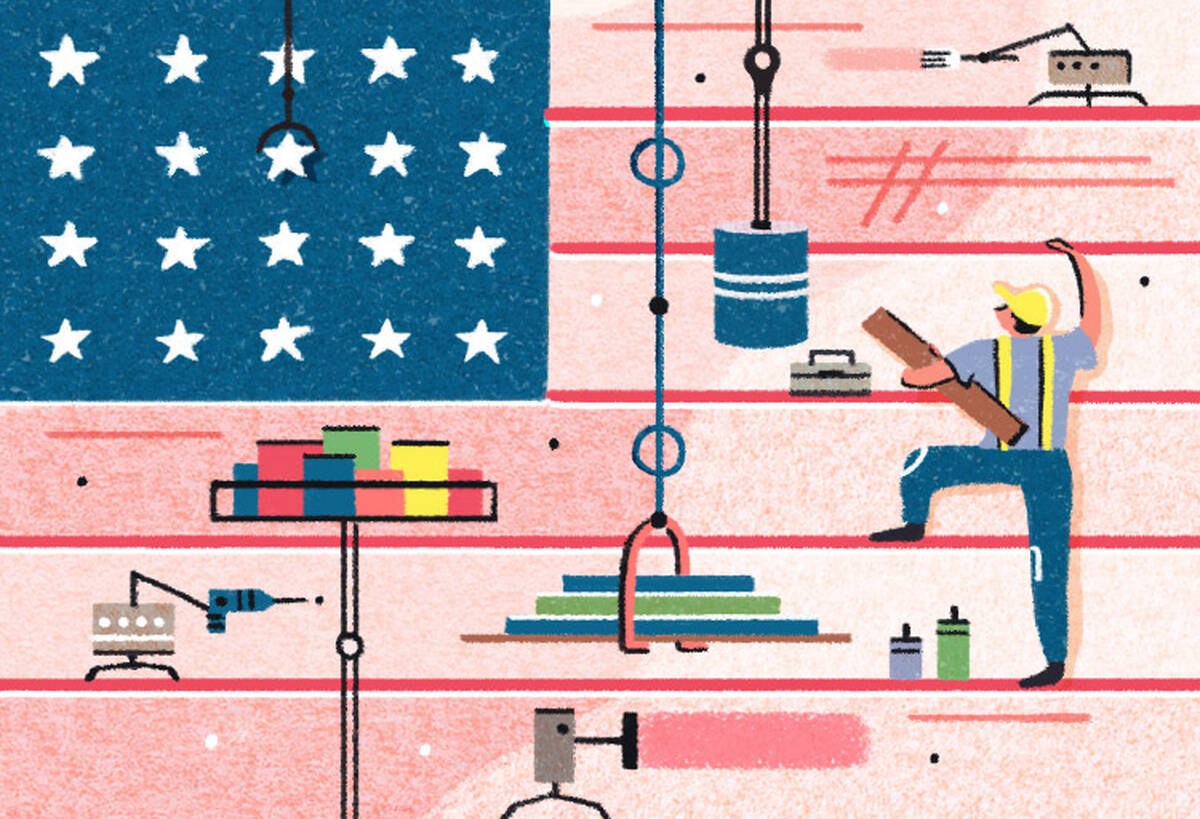Policy Oct 2, 2017
Robots Are Taking Americans’ Jobs. What Can Be Done?
Four concrete policy proposals to get people back to work.

Morgan Ramberg
From warehouse robots to driverless cars, automation continues to transform millions of American jobs—as well as to fuel the anxiety of an increasingly precarious working class. A number of politicians, including the President, have promised to restore jobs by curbing investment in new technologies. This attitude certainly strikes a chord with Rust Belt communities that have seen declining industry coincide with Silicon Valley wealth.
But David Besanko, the IBM professor of regulation and competitive practice at the Kellogg School, says halting automation would only harm the nation’s global competitiveness. Instead of banning driverless trucks or hitting companies with a “robot” tax, Besanko argues in a new white paper cowritten with Max Meyers that the most strategic way to protect workers is through policies that help them adjust to the new economy. Such policies should be aimed at offering workers better access to training and equipping them to build their own businesses.
“This isn’t a problem that we should leave entirely to the private sector,” Besanko says. The scale is simply too enormous—machines might be able to perform half of all U.S. jobs in the next two decades.
Moreover, the social costs of labor displacement are significant. “Long periods of unemployment can devastate communities. We’re seeing that now with the opioid crisis,” he says. “But no single business has an incentive to take these costs into account when investing in labor-saving technologies. This is why there is a role for government in helping deal with the costs of labor displacement.”
So what should the government do to support the adjustment to automation? It’s clear that current government programs will not be enough to address the challenge. Trade Adjustment Assistance is funded at 0.1 percent of GDP, and even that paltry investment rarely supports the entrepreneurs who are likely to drive local economies.
“An effective policy needs to take the long view,” Besanko says. “We need to provide more relevant training, but we also need to respect the ties that workers have to their families and communities. The key is for people to have access to opportunities that don’t require uprooting themselves or taking a huge pay cut as they transition.”
To make that happen, Besanko and Meyers offer four policy proposals.
Bridge the Digital Divide
One obvious first step the government could take: invest in digital infrastructure.
“There’s a stark digital divide in this country, and there doesn’t need to be,” Besanko says.
One in five Americans lacks Internet access. By expanding broadband installation and subsidizing the service (perhaps through community block grants), the government could put more Americans on the digital grid, giving them access to education, training, and other resources that would help them further their careers.
This is in contrast to traditional initiatives, which have focused on community colleges’ ability to give disadvantaged students a leg up in the economy, which is why some politicians have favored bolstering support for such schools. Yet a combination of broadband access and digital-training programs could yield similar results for a fraction of the cost.
“There are enormous economies of scale in being able to reach millions of workers and help them retrain through online courses,” Besanko says. But you can’t do that if you don’t have the capacity. This only works if everyone in the country can get online,” says Besanko.
Besanko points to Estonia as an example of how transformative online access can be for a workforce. In 2000, the country declared Internet access a basic right and began taking government education programs digital. The economy has since transformed into a high-tech hub, becoming the birthplace of Skype and home to scores of European tech companies.
In addition to leveling the playing field, investing in digital infrastructure would also expand the “gig economy” for certain services such as TaskRabbit to labor pools beyond major cities, thus reducing the country’s deepening rural-urban divide.
“It’s not hard to see the upside of an investment like this,” Besanko says. “Just as it’s a good idea to have universal access to electricity, it’s a good idea to have universal access to the Internet.”
Support Apprenticeship Programs
The soaring cost of education has long been an obstacle for young people, as well as for anyone wanting to switch careers. What if there was an option beyond a pricey college degree?
Besanko thinks the government could do more to support training programs that prepare students for jobs that really exist—or that might soon exist.
Germany has led the way in apprenticeship-style programs for decades. By integrating training into the education system, the country ensures that its young people are prepared for the latest trends in the labor market.
The U.S. has a very different higher education system, but it could take a similar approach, offering underemployed workers a less costly option than pursuing advanced degrees—particularly in areas like machine learning, where exposure to industry applications becomes especially valuable.
There are already a few existing models. In New Hampshire, the Dartmouth-Hitchcock hospital system teamed up with the Department of Labor to offer a free 15-month apprenticeship program that helps train medical assistants and pharmacy technicians, addressing a shortage of hospital staff in an area with an aging population. For those participants, the other option would be to pursue a medical assistant degree that would take two years and cost up to $20,000.
“The key is for people to have access to opportunities that don’t require uprooting themselves or taking a huge pay cut as they transition.”
Of course, many companies have their own training programs, but most are short-term in nature and require high startup costs.
“Apprenticeships require long-horizon thinking,” Besanko says. “Executives are often more focused on quarterly returns, so it’s not clear that firms will offer the right number of programs, or even the right kinds. Yet these programs potentially offer huge social benefits.”
Finance Local Entrepreneurs
Another solution is for the government to offer young people the tools and capital they need to start their own businesses.
Financing local entrepreneurs would help people build businesses in their own communities without having to relocate and sever important social ties. North Carolina’s Institute for Rural Entrepreneurship offers one model for how such financing might work. In addition to offering small loans, its programs provide one-on-one coaching, help in developing business plans, and scholarships for business or vocational training.
“You need more than grant funding in order to make this work,” Besanko says. “You need upscaling as well. That’s what can really open the door for people to follow their dreams, to create sustainable businesses, and to do it in their own communities. People are often more satisfied when they can find a way to work for themselves and don’t have to leave their communities to do it.”
Offer Wage Insurance
One of the most difficult challenges for these policies, however, is ensuring that people will want to take advantage of them.
“We think the most effective policy is to offer wage insurance to encourage training and job seeking,” says Besanko.
This would mean that the government put programs in place to encourage those workers to retrain for businesses that are ready to hire. If the job initially pays less, government-sponsored wage insurance can help those workers manage the transition. This way, more workers will be willing to take a short-term pay cut while receiving on-the-job training.
By incentivizing work, wage insurance also guarantees that people maintain the sense of purpose derived from their job. A similar policy could even be extended to volunteerism—someone in their late 50s, for example, might be encouraged to serve as a mentor to high school students.
“It’s no secret that people derive a sense of dignity from their work,” Besanko says. “What we need are policies that protect and restore that dignity.”
An Affordable Solution
Besanko and Meyers estimate that the total cost of these programs would be $25 billion—not an insignificant number, but one that would still represent less than one percent of U.S. federal government outlays in 2017. Besanko suggests there are plenty of ways the government could raise this money—for example, by introducing a financial transaction tax or a tax on wealth of high-net-worth households.
“When you consider the scale of the problem and the social cost of unemployment, these are very affordable programs,” Besanko says.
“Technology will continue to advance, and the government needs to come up with solutions that are consistent both with the principles of good strategy and America’s cultural DNA. This is a country that values strong ties to local communities and emphasizes the importance of building small businesses. Our policies should honor that.”



